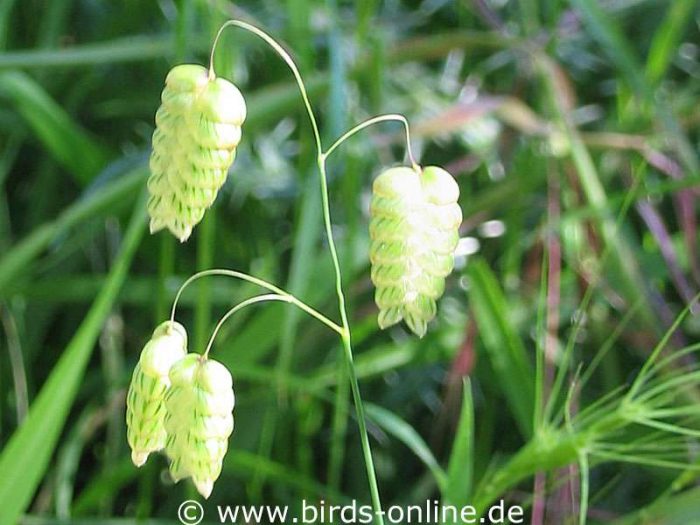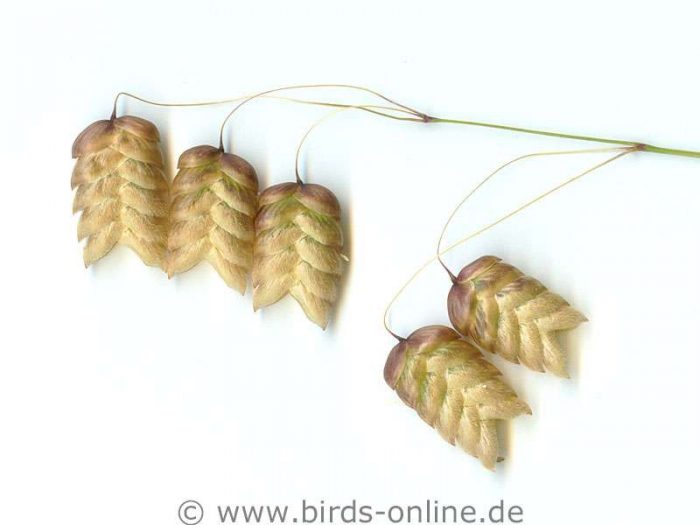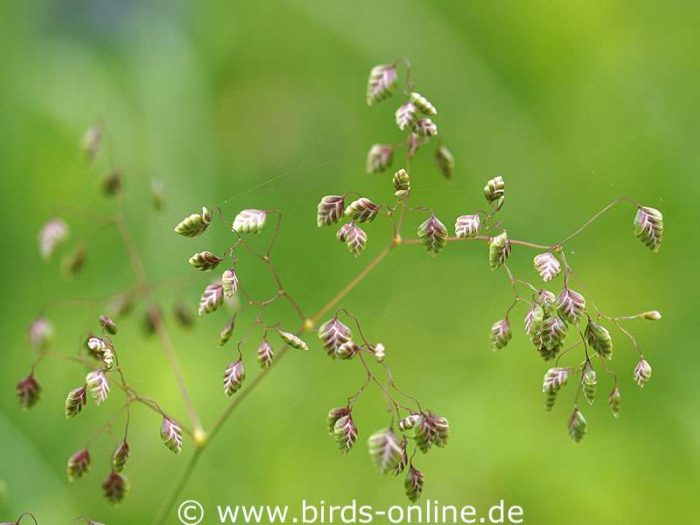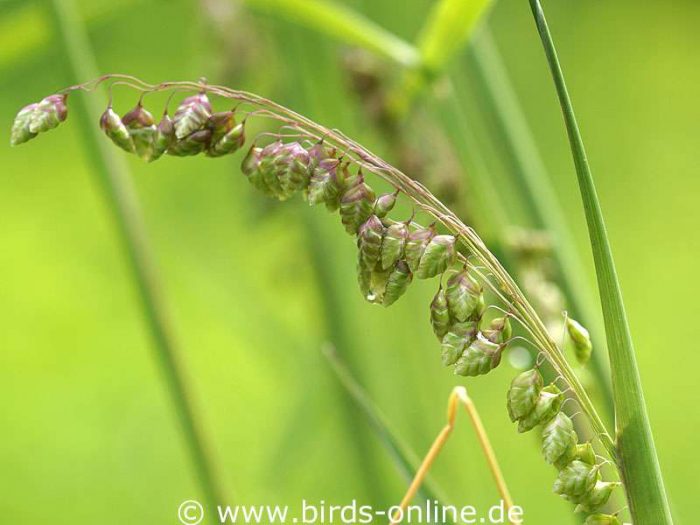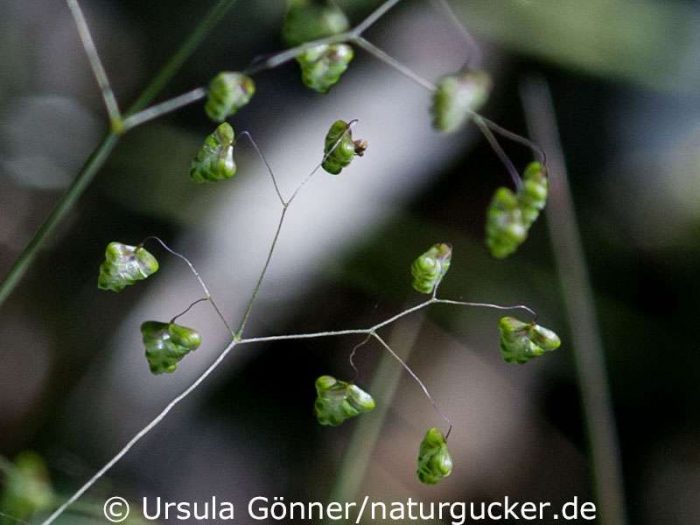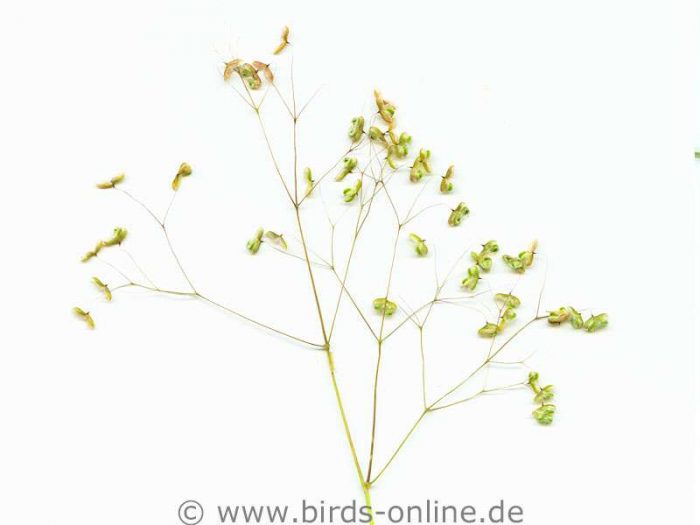- >>
- Birds Online – English
- >>
- Nutrition
- >>
- Healthy bird food from...
- >>
- Native grasses and cereals
- >>
- Quaking grasses (Briza)
Quaking grasses
Quaking grass from the genus Briza occurs naturally in Central Europe in several different species; they all belong to the grass family (Poaceae). Below you will find brief descriptions of the most important species.
Greater quaking grass (Briza maxima)
While the half-ripe and ripe seeds of quaking grass are not usually very popular with small pet bird species such as budgies, some larger bird species do like them. This species of grass can grow to a height of 10 cm to 60 cm and thrives particularly well in nutrient-poor soil. Between May and August, you can collect half-ripe spikes of greater quaking grass if you can find it in Central Europe. It is quite rare here, as it originally comes from the Mediterranean region and is usually only cultivated as an ornamental plant.
More pictures of rushes can be found on NABU-naturgucker.de (German website, but also available in English language).
Common quaking grass (Briza media)
One of the most decorative sweet grasses found in Central Europe is the common quaking grass. These plants grow to a height of between 20 cm and 100 cm. They flower from May to August. Typical for this type of grass is that the inflorescence forms a loose, spread-out, pyramid-shaped panicle. In order to thrive, the quaking grass requires nutrient-poor soil. Most small pet birds are very fond of this grass species when it is flowering and half-ripe, and many larger bird species also eat it with enthusiasm. This plant species is also known by many other names including cow-quake, dithering-grass or dodder-grass.
More pictures of rushes can be found on NABU-naturgucker.de (German website, but also available in English language).
Lesser quaking grass (Briza minor)
The lesser quaking grass originates from the Mediterranean region, in Central Europe it is often cultivated as an ornamental plant and can also be found in the wild in some places. It grows to a height of between 15 cm and 40 cm. Its appearance is very similar to that of the common quaking grass, although the spikelets of the lesser quaking grass are considerably more delicate than those of its sister species. Small pet birds such as budgies are particularly fond of this grass when it is half-ripe, whereas fully ripe lesser quaking grass is less readily accepted.
More pictures of rushes can be found on NABU-naturgucker.de (German website, but also available in English language).
German – English translation: Sarah Wiechers

